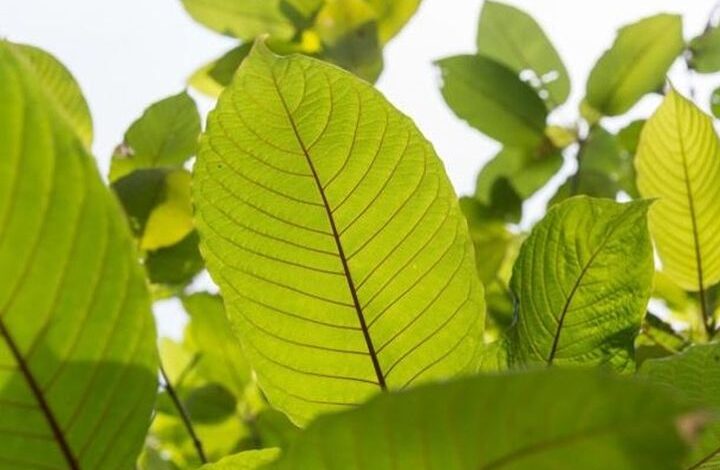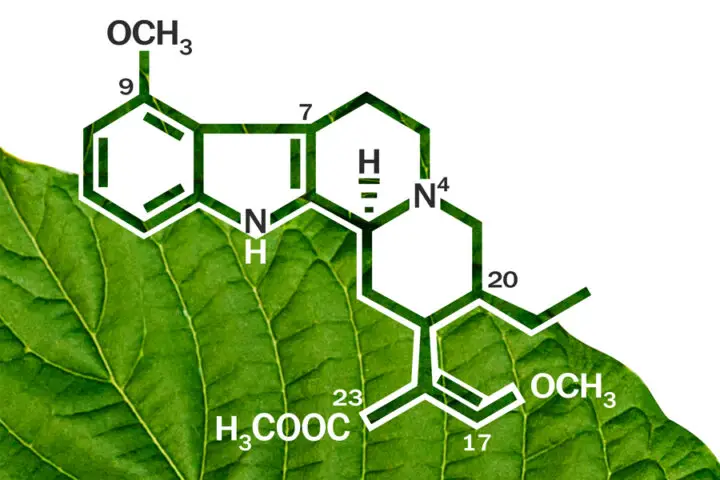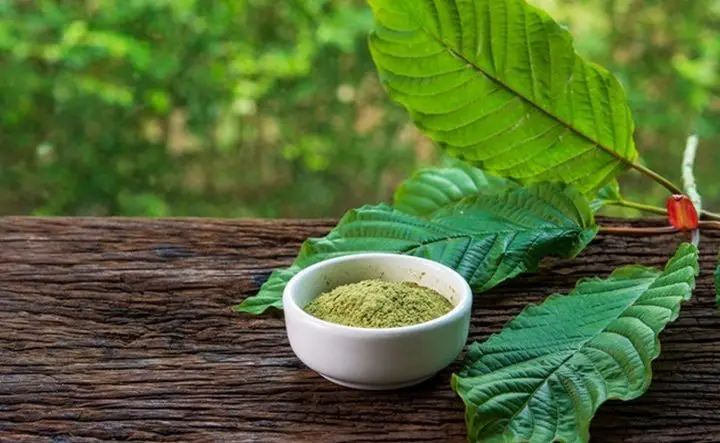A Kratom Guide – Back To The Basics

What Is Kratom?
Kratom, also known as mitragyna speciosa, comes from a tropical tree native to Southeast Asia. Kratom trees can grow up to 82 feet tall with a 3 foot wide trunk when in their natural environment. The trees have a smooth gray bark with dark green glossy leaves that grow to an average of 5.5 inches wide and 8 inches long.
The kratom tree is in the coffee family. The leaves are harvested, dried, crushed to make crushed kratom, or ground to make kratom powder. The leaves are then consumed in a number of different ways. Traditionally workers would consume kratom by picking the leaves right off of the trees and eating them on the spot.
Kratom Alkaloids

Phytochemicals are chemicals found in plants. Alkaloids are phytochemicals that can physiologically affect humans. For instance, a well-known alkaloid that is in coffee is caffeine.
Researchers currently recognize 28 different alkaloids in kratom. Only two alkaloids out of the 28 are believed to have a significant effect on consumers. Mitragynine and 7-Hydroxymitragynine are the two most active alkaloids in kratom.
Mitragynine is the most abundant alkaloid in kratom leaves. Making up more than 65% of kratom’s active alkaloid content, mitragynine is an important part of kratom. The concentration levels of mitragynine can change some depending on the strain. White and green strains have a higher concentration while red and other strains don’t contain quite as much.
7-Hydroxymitragynine makes up 2% of the alkaloid content. This makes it the 4th largest alkaloid found in kratom. 7-Hydroxymitragynine is found in higher concentrations in red strains. The effects of 7-Hydroxymitragynine only last about half as long as Mitragynine.
Crushed Leaf and Plain leaf

There are two main forms of kratom. The most common form is called plain leaf. Plain leaf is created by drying the kratom leaves and then grinding them to a fine powder. It can be consumed in capsules, mixing with liquid, or a number of other ways. Crushed leaf is made by drying the kratom leaves and crushing them into tiny shredded pieces of dried leaves. Crushed leaf is most often used to make teas. Although these are two of the most common forms of kratom, they are not the only forms. There are extracts, candy, and edible food items made from kratom as well.
Kratom Storage
It’s important to make sure that kratom is stored properly. If a kratom product received from a vendor is not going to be finished within two weeks, then it needs to be stored properly. An airtight container is best. If the container is translucent, then it needs to be stored in a cabinet or somewhere away from regular and direct sunlight. If the container is opaque, it is safe to store on a shelf or counter. It’s best to try to keep kratom around room temperature. Storing it in the fridge or freezer can cause moisture to get in and allow bacteria to grow. Taking care to properly store kratom makes for a much better experience in the long run.
Managing Kratom Tolerance (same strain syndrome)
Same strain syndrome, also known as stagnant strain syndrome, is something that happens when a person has been consuming the same strain over a long period of time without switching it up. It causes the strain to be less effective, and can make switching a bit more difficult as well. Somebody experiencing the same strain syndrome needs to get another strain and taper over to using the new strain instead of the old. The best way to avoid same strain syndrome altogether is to make sure to switch strains regularly and make use of blends. The constantly changing alkaloid levels and content won’t allow the body to get used to a single strain.
Ways To Consume Kratom

There are many ways to consume kratom which is very much tailored to individual preferences. Some of the most popular ways to consume kratom are in capsules, toss and wash, making tea, mixing into a drink, making honeyballs, and using oblate discs. Capsules are the easiest way to consume kratom, but many prefer the other various options.
Finding A Vendor
When looking for a vendor, safety, quality, and price are extremely important. The first thing to look for when choosing a vendor is making sure they have a GMP certification. This means that they hold themselves to a higher quality standard and that their product is tested and safe. The next quality to look for in a vendor is if they are backed by the American Kratom Association (AKA) and a qualified vendor. In order to be an AKA supported vendor, the vendor not only has to not only be GMP certified, but also has to stick to the AKA’s list of quality control.
If a customer loves their vendor so much that they take the time out of their day to leave them a wonderful review, then checking the reviews will give precious insight into customer experience. Austin Organic Village’s website, reviews, qualifications, newsletters, prices, and list of products can be found at www.austinorganicvillage.online.
Conclusion

Sometimes, just getting back to the basics, especially for new customers, is helpful. There are a lot of newsletters that go more in depth into all of these topics. There is a search feature in the library on the website where customers can search for specific information from past articles. Customer service representatives will gladly take as much time as is needed to help with anything within their power. Twice a month AOV releases another article on their website and through emails to those who have signed up for the newsletter.
